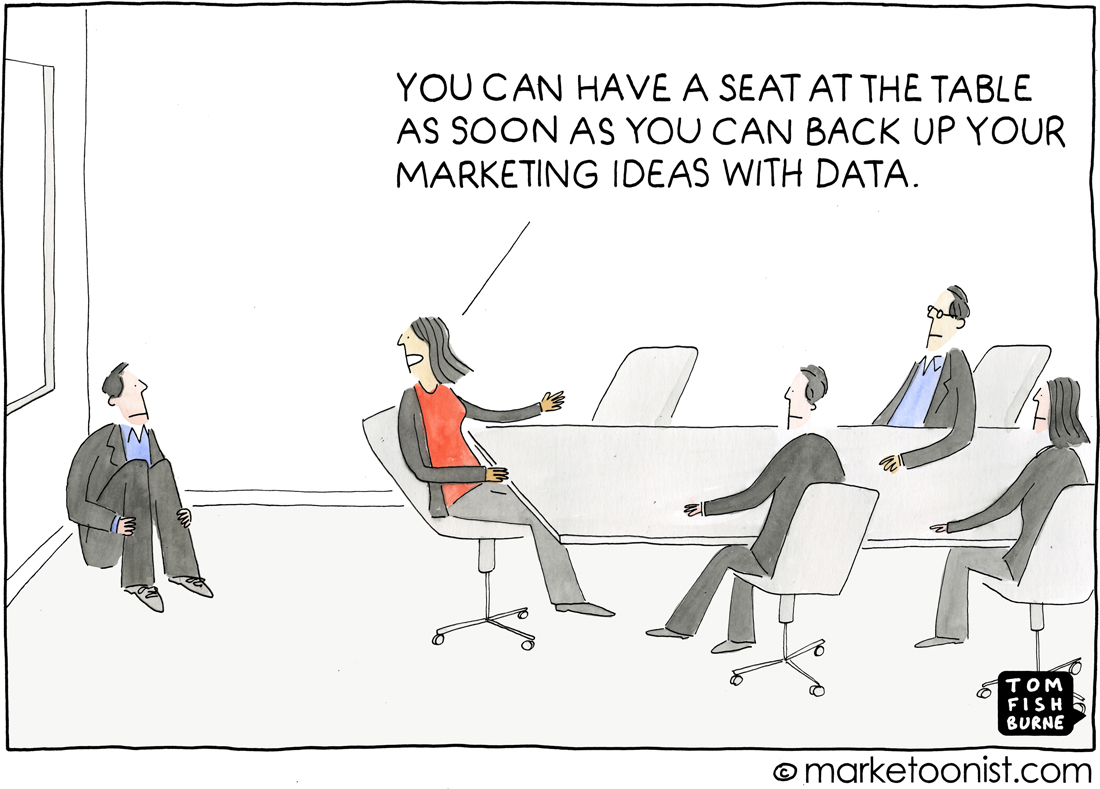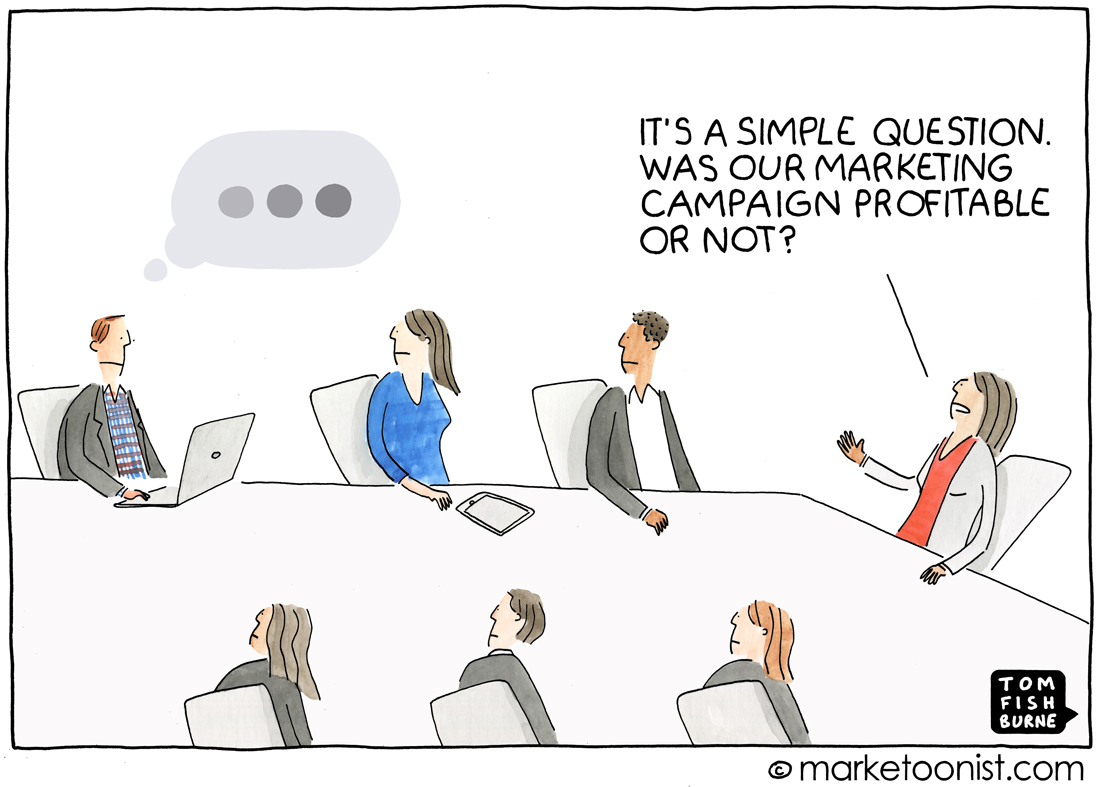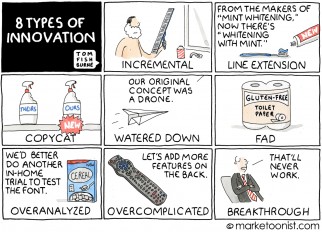Marketers are facing increasing pressure to demonstrate ROI, but giving a simple answer to the ROI question still isn’t that simple.
Econsultancy released a report last month titled “Marketing Budgets 2016” that flags ROI measurement as a major impediment to increasing marketing activity.
Illustrating ROI has always been tricky in traditional marketing, but even in digital marketing, marketers don’t rate their ability to measure ROI very highly. Fewer than a quarter of marketers valued their ROI measurement ability as “good” for channels like social media, mobile, and video advertising, and half felt “good” about search and email marketing.
Stitching together data from multiple programs and assigning attribution to some activities over others only makes the answer more complex. Around the C-level table, that puts marketers at a real disadvantage. Other functions like operations or sales make a clearer case for investment. Marketing is more nuanced.
I touched on this issue last year in a cartoon about marketing’s seat at the table. I was particularly struck by this comment from a reader named Lindani:
“The moment the brands are seen as businesses and brand teams as business units, then only will the perception of Marketing Departments as the “colouring-in department” change. The whole organisation needs to be consumer inspired and brand led, it cant just be the role of the marketing team. This means a healthy balance between quality delivery of brand experience to consumers and results to shareholders.”
One of the things that attracted me to consumer packaged goods (and General Mills) out of business school 14 years ago was the idea that “marketing” should be thought of as “general management”. It was a more expansive vision of marketing than a communications role. It was about managing a business. It was about understanding the full P&L. That model helped frame how to put marketing programs in context to the overall impact on the business.
Even when we don’t have perfect measurement tools, I think marketers need to think like general managers.
I’d love to hear your thoughts.
Here’s the Marketing Seat at the Table cartoon from last year.




Robbie Cumming says
Anyone that asks what the return on investment in a marketing campaign (or PR in my current job role) – whether traditional or digital, is just showing their ignorance, surely! Even with modern digital measurement techniques, apps, dashboards etc – we still can’t single out one part of the mix and ask how much that particular effort affected sales. Or perhaps I’m the one being ignorant!
Jim Flynn says
Bill King is dead on. We are no longer in the dark ages of not being able to track ROI in an online world. The metrics that Bill mentioned are among the best ones we help our clients to track to prove ROI in Lead Gen. Using HubSpot and other Marketing Automation systems…you can be doing this effectively in 6-12 months from today. Define all your online channels and track in HubSpot.
1) Take your Customer Lifetime Value (LTV) X Gross Profit Percent, against
2) Your marketing expense over your new customers acquired (Custome Acquisition Cost or CAC)
You can define your LTV:CAC. Today we can prove for our clients a 18:1, 26:1 or higher LTV:CAC. Good stuff, let me know if I can help you with more details
David Coghlan says
The challenge for many businesses is that taking a zoomed out view, i.e. ROI on total marketing investment, is pretty easy. Its when a business wants to dig a little deeper and start to understand the components of that marketing spend that confusion reigns.
Marketers also need to help themselves and come half way, by being very clear about how granular they can get by channel/activty, but also being clear that some investment is just too timeconsuming or costly to accurately attribute.
Nobody wakes bolt upright in bed one morning desperate to perform a branded google search for your SaaS business, so chances are your brand awareness or PR activity is somewhere in the mix of that particular customer journey.
The easiest way to test the value of less attributable activity is to just turn it off and see what happens. Generally a CEO or MD when faced with this potential loss of sales will be less keen.
Todd B says
“…ROI measurement as a major impediment to increasing marketing activity.”
This is so spot on it’s ridiculous. I definitely feel that myself and the rest of the marketing department at my company spend way more time ‘defending’ what we do than actually doing it or improving.
Might have to put this one up on my cube wall!
Bill King says
Although true ROI is pretty hard to quantify, you can do a damn good job of getting close if you make analytics a part of the marketing team culture. I’m in the middle of spreading that mindset here at my new gig. Data and spreadsheets are scary, so instead of trying to force it on your team, hire the right people who can’t think of working any other way than with data & analytics. That’s my approach and it seems to be working.
Deanna Lennox says
Bill,
Could you give me any info on what metrics you measure on a weekly or monthly basis? Or what reporting system you use… Our team is all about numbers and while we do measure the success of our efforts, I’m sure there is a better way. I would be glad for any input. I think the numbers are essential and so many in my field don’t agree. Nonetheless, the numbers are what management wants to hear!
-Deanna
Bill King says
Hey Deanna – Here are some basic numbers I’m building systems to report on as we speak. This will continue to evolve as we have a deeper look into the data but this is a good start:
1) Customer Acquisition Cost (CAC)
2) Marketing % of Customer Acquisition Cost (M%-CAC)
3) Ratio of Customer Lifetime Value to CAC (LTV:CAC)
4) Time to Payback CAC
5) Marketing Originated Customer %
6) Marketing Influenced Customer %
We tie in Salesforce data along with reports in Hubspot to make sense of the source/attribution stuff. My end goal is to get these into dashboards so we can always have it at a glance.
Deanna Lennox says
Interesting – thanks Bill. Appreciate the input. Familiar with these metrics but not exactly something you report on weekly. If you are using Hubspot, that makes sense. We use SalesForce, but our management team didn’t thing HubSpot was a good fit for us. I’m still of two minds on the subject. My management team is mainly interested in # of leads.
Jeff S says
Arguably, “marketing” itself does not inherently make the sale (sans maybe direct call-to-action for self-serve products). Why then should “sales” be marketing’s responsibility and P&L?
Ori Pomerantz says
Because the whole point of the rest of the business is to generate sales in ways that aren’t fraud. R&D need to show that new products or services are likely to result in additional sales. Operations is in the business of making sure the goods and services sold are actually delivered, etc.
John Dodds says
I agree completely with your general management observation Tom. Anyone who gives the 4Ps a moment of thought must deduce that corporate strategy and marketing (done right) are united by a similarity of approach.
For me, the real question is why the defensive, cost-managing book-keepers hold such sway when the raison d’etre of any business is understanding and meeting customer needs rather than maximising accounting ratios.
Maria Osipova says
I don’t get how it’s even still a question that marketing has to have an ROI proven on activities and investment. When the budget is spent there should be accountability on results and those results should be directly connected to the company’s goals. Activity or program should have the measurement mechanisms built in right at the beginning, at the planning stage. Can there be a larger overall impact? Absolutely, there usually is. But the direct, conservative measurement should be put in place before any program is executed. If the goal is lead generation, then leads should be measured, along with the pipeline contribution that’s resulting from the activity. If customer expansion, then that’s the metric. While attribution to specific campaigns can be more nuanced, overall marketing impact can and should be measured directly to claim the seat at the C-table and budgets.